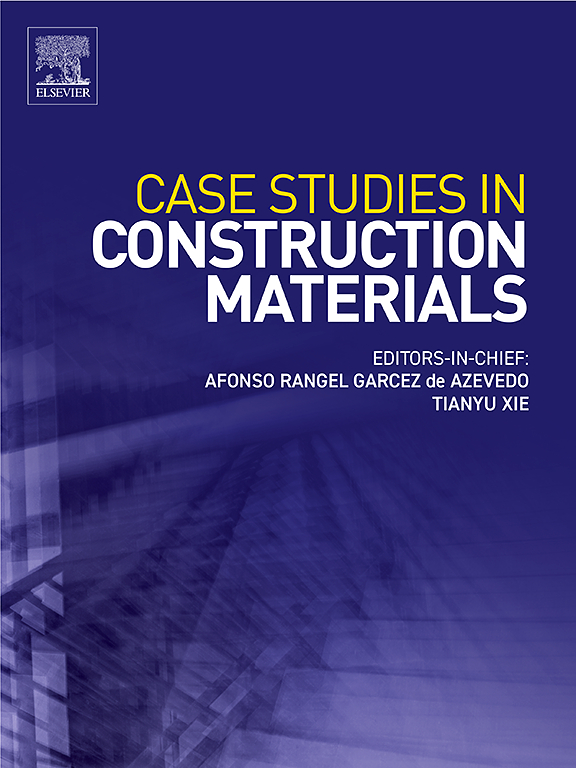Characterization of resilient behavior of a fine-grained subgrade filler under graded variable confining pressure
IF 6.6
2区 工程技术
Q1 CONSTRUCTION & BUILDING TECHNOLOGY
引用次数: 0
Abstract
The prestressed subgrade is a novel subgrade reinforcement technique wherein horizontal prestress is applied to the subgrade soil through prestressed reinforcement devices. The applied prestress propagates from the slope to the interior of the subgrade, thereby enhancing the confining pressure (σ3) of the subgrade filler/soil. A series of dynamic triaxial tests with graded variable confining pressure was performed to assess the impact of horizontal prestress on the resilient behavior of a typical fine-grained subgrade filler. The resilient modulus (MR) characteristics and its variation patterns were meticulously analyzed and discussed. The results demonstrate that graded increasing σ3 could enhance the subgrade filler’s resistance to dynamic elastic deformation, thereby significantly improving its MR, with final increments around 10 MPa. The dynamic loading cycle interval (Nc) between two adjacent graded confining pressures markedly influences the developmental trend of MR, and earlier increasing σ3 and smaller Nc lead to a higher stable MR of the filler. Each graded increment in the σ3 initially results in an immediate increase in the specimen’s MR, which is subsequently followed by a decline and eventual stabilization with increasing the dynamic loading cycles. Additionally, the advantages of graded increasing σ3 may not counterbalance the detrimental effects of increased moisture content on the MR. Subsequently, a prediction model for the MR was developed accounting for the conditions of graded variable confining pressure. The model was validated by a high degree of concordance between the predicted and measured MR values of a stable specimen.
分级变围压下细粒路基填料弹性特性表征
预应力路基是通过预应力加固装置对路基土体施加水平预应力的一种新型路基加固技术。施加的预应力由边坡向路基内部扩散,提高了路基填料/土的围压(σ3)。为评估水平预应力对典型细粒路基填料弹性性能的影响,进行了一系列变围压分级动三轴试验。对弹性模量(MR)特性及其变化规律进行了细致的分析和讨论。结果表明:逐级增大σ3可以增强路基填料的动力弹性变形抗力,从而显著提高其磁流变率,最终增量在10 MPa左右;相邻两个梯度围压之间的动态加载周期间隔(Nc)显著影响填料MR的发展趋势,σ3越早增大,Nc越小,填料的稳定MR越高。σ3每增加一次,试样的磁流变率都会立即增加,随后随动加载循环次数的增加而下降,最终趋于稳定。此外,分级增大σ3的优势可能无法抵消含水率增大对MR的不利影响。随后,建立了考虑分级变围压条件下MR的预测模型。该模型通过稳定标本的预测和测量MR值之间的高度一致性进行了验证。
本文章由计算机程序翻译,如有差异,请以英文原文为准。
求助全文
约1分钟内获得全文
求助全文
来源期刊

Case Studies in Construction Materials
Multiple-
CiteScore
7.60
自引率
19.40%
发文量
842
审稿时长
63 days
期刊介绍:
Case Studies in Construction Materials provides a forum for the rapid publication of short, structured Case Studies on construction materials. In addition, the journal also publishes related Short Communications, Full length research article and Comprehensive review papers (by invitation).
The journal will provide an essential compendium of case studies for practicing engineers, designers, researchers and other practitioners who are interested in all aspects construction materials. The journal will publish new and novel case studies, but will also provide a forum for the publication of high quality descriptions of classic construction material problems and solutions.
 求助内容:
求助内容: 应助结果提醒方式:
应助结果提醒方式:


